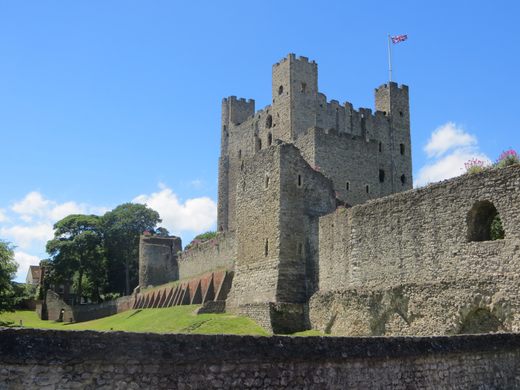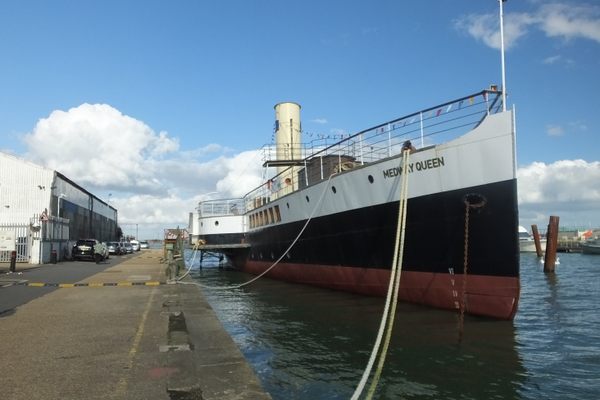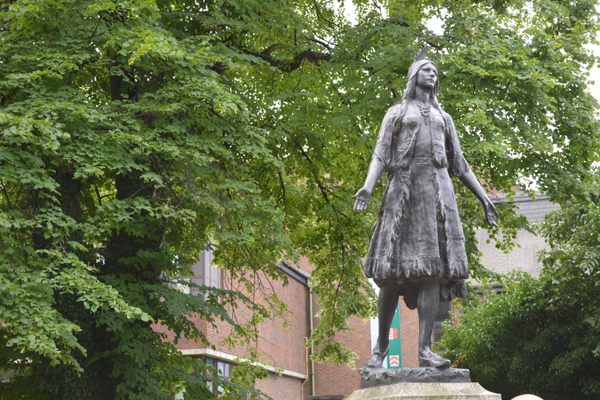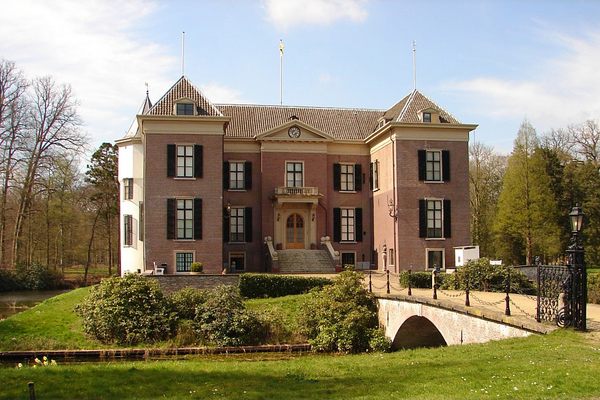Rochester Castle
This foreboding medieval castle was twice besieged by barons rebelling against the English king.
Rochester Castle, like many of England’s castles, was built in the wake of the Norman Conquest of 1066 to maintain a strong and visible military presence that would discourage armed resistance from the Anglo-Saxon populace. Situated strategically close to the River Medway, this formidable edifice would have been an intimidating enough sight to give even the most resolved enemy pause when considering an attack.
Standing over 113 feet tall, the colossal structure towers above the surrounding area as a defining feature of the town and one of the most important historic sites in Kent. The castle was built in 1127 in a utilitarian manner with a solely military purpose, and so in spite of its impressive size and atmospheric ambiance, it noticeably lacks the beauty and charm of other more ornamental castles. But sure enough, the castle was besieged on several occasions in the Middle Ages, most notably during the First and Second Barons’ Wars of the 12th century.
The First Barons’ War was a bloody and prolonged civil war sparked by the tyrannical King John of England, who continued to violate the laws of the Magna Carta that he had been forced to sign at swordpoint. A group of powerful barons rebelled against the despot and fomented an uprising to overthrow the regime. In 1216, a contingent of the rebel army seized Rochester Castle and waited for reinforcements from London, but the army of King John burned the city’s bridge, preventing their arrival. This led to a fierce siege by the rebels, who finally had to surrender rather than starve to death, and were granted clemency.
The castle was again besieged in 1264 during the Second Barons’ War. The rebel army was once again led by a group of barons who sought to reassert the terms of the Magna Carta. This time the war had arisen in the face of a constitutional crisis caused by the misrule of King Henry III. During the siege, a greater degree of damage was inflicted on the castle, which is still evident today. Though the rebels were able to breach the outer walls, the defenders stood firm in the castle keep, firing arrows and crossbow bolts at the attackers. Due to the subsequent arrival of royal reinforcements, the army of the barons was eventually forced to withdraw.
Today, the castle is an English Heritage site and museum, where its rich medieval history can be explored to the full and the ruins of this atmospheric edifice may be easily visited on a day trip from London or Canterbury.
Know Before You Go
The castle is open daily from 10 a.m. to 6 p.m. and the entrance fee costs £6.40 or £4 if you are a card-carrying student. English Heritage and reciprocal card holders enter for free.
The castle is unfortunately not good for those with mobility issues as many of the floors are via irregular rough stone steps, many of them on tight spiral staircases. The inner keep can be viewed from a platform accessed by modern wooden steps from the first floor kiosk. There are benches throughout. It's 100+ steps to the top, and another 100+ back down.
There are small car parks near the castle, and there is ample pay parking on the Esplanade along the river below the castle.
Community Contributors
Added by
Plan Your Trip
The Atlas Obscura Podcast is Back!



























Follow us on Twitter to get the latest on the world's hidden wonders.
Like us on Facebook to get the latest on the world's hidden wonders.
Follow us on Twitter Like us on Facebook